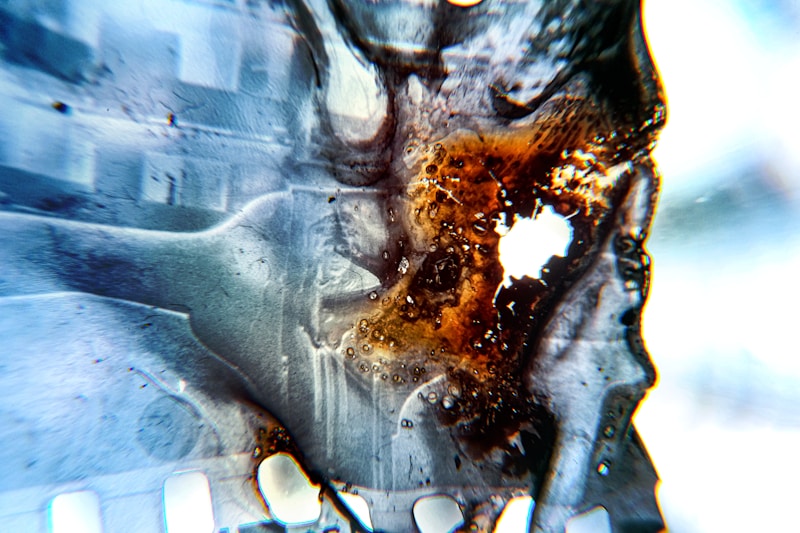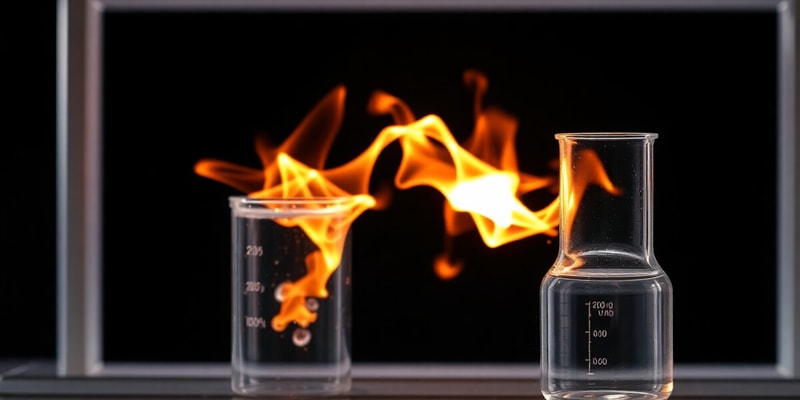Podcast
Questions and Answers
What is the reaction enthalpy (ΔHrxn) for the conversion of maleic acid to fumaric acid?
What is the reaction enthalpy (ΔHrxn) for the conversion of maleic acid to fumaric acid?
-23.3 kJ mol-1
Write the balanced equation for the combustion of glucose (C6H12O6) in the presence of oxygen.
Write the balanced equation for the combustion of glucose (C6H12O6) in the presence of oxygen.
C6H12O6 + 6O2 → 6CO2 + 6H2O
What is the standard enthalpy of formation (ΔHf°) of carbon dioxide (CO2) at 305 K?
What is the standard enthalpy of formation (ΔHf°) of carbon dioxide (CO2) at 305 K?
-393.5 kJ mol-1
Calculate the total enthalpy change (ΔH) for the combustion of one mole of glucose using the provided enthalpies of formation.
Calculate the total enthalpy change (ΔH) for the combustion of one mole of glucose using the provided enthalpies of formation.
Signup and view all the answers
What is the enthalpy of formation (ΔHf°) for glucose (C6H12O6) at standard conditions?
What is the enthalpy of formation (ΔHf°) for glucose (C6H12O6) at standard conditions?
Signup and view all the answers
How do you calculate the enthalpy change for a reaction using standard enthalpies of formation?
How do you calculate the enthalpy change for a reaction using standard enthalpies of formation?
Signup and view all the answers
What is the significance of a negative ΔHrxn value?
What is the significance of a negative ΔHrxn value?
Signup and view all the answers
What role does oxygen play in the metabolism of glucose?
What role does oxygen play in the metabolism of glucose?
Signup and view all the answers
Study Notes
Determining Enthalpy Change
- The enthalpy change of a reaction (ΔHrxn) can be calculated using the enthalpies of formation of the reactants and products.
- The enthalpy change for the reaction is given by the difference between the enthalpy of formation of the products and the enthalpy of formation of the reactants.
Enthalpy of Formation
- The enthalpy of formation (ΔHf⁰) is the enthalpy change when one mole of a compound is formed from its elements in their standard states.
- Elements in their standard states have a ΔHf⁰ of 0 kJ/mol.
- The enthalpy of formation of a compound is a negative value if the formation process is exothermic and a positive value if it is endothermic.
Calculating Enthalpy Change for a Reaction
- The enthalpy change for the reaction of maleic acid to fumaric acid is -23.3 kJ/mol.
- This means that the reaction is exothermic because the enthalpy of the product (fumaric acid) is lower than the enthalpy of the reactant (maleic acid).
Balanced Chemical Equation
-
The balanced chemical equation for the reaction of glucose and oxygen to give carbon dioxide and water is: C6H12O6 (s) + 6O2 (g) → 6CO2 (g) + 6H2O (l)
-
The equation must have the same number of atoms of each element on both sides.
Calculating Enthalpy Change for the Reaction of Glucose and Oxygen
- The enthalpy change for the reaction of glucose and oxygen is calculated using the formula ΔHrxn = ΣΔHf⁰ (products) - ΣΔHf⁰ (reactants).
- Using the given enthalpies of formation, the enthalpy change for the reaction of glucose and oxygen is calculated to be -2803.2 kJ/mol.
- The negative value indicates that the reaction is exothermic.
Studying That Suits You
Use AI to generate personalized quizzes and flashcards to suit your learning preferences.
Related Documents
Description
This quiz focuses on calculating the enthalpy change of reactions, using the enthalpies of formation for reactants and products. It covers concepts such as exothermic and endothermic processes, as well as practical examples, including the reaction of maleic acid to fumaric acid. Test your knowledge on enthalpy changes in chemical reactions!




